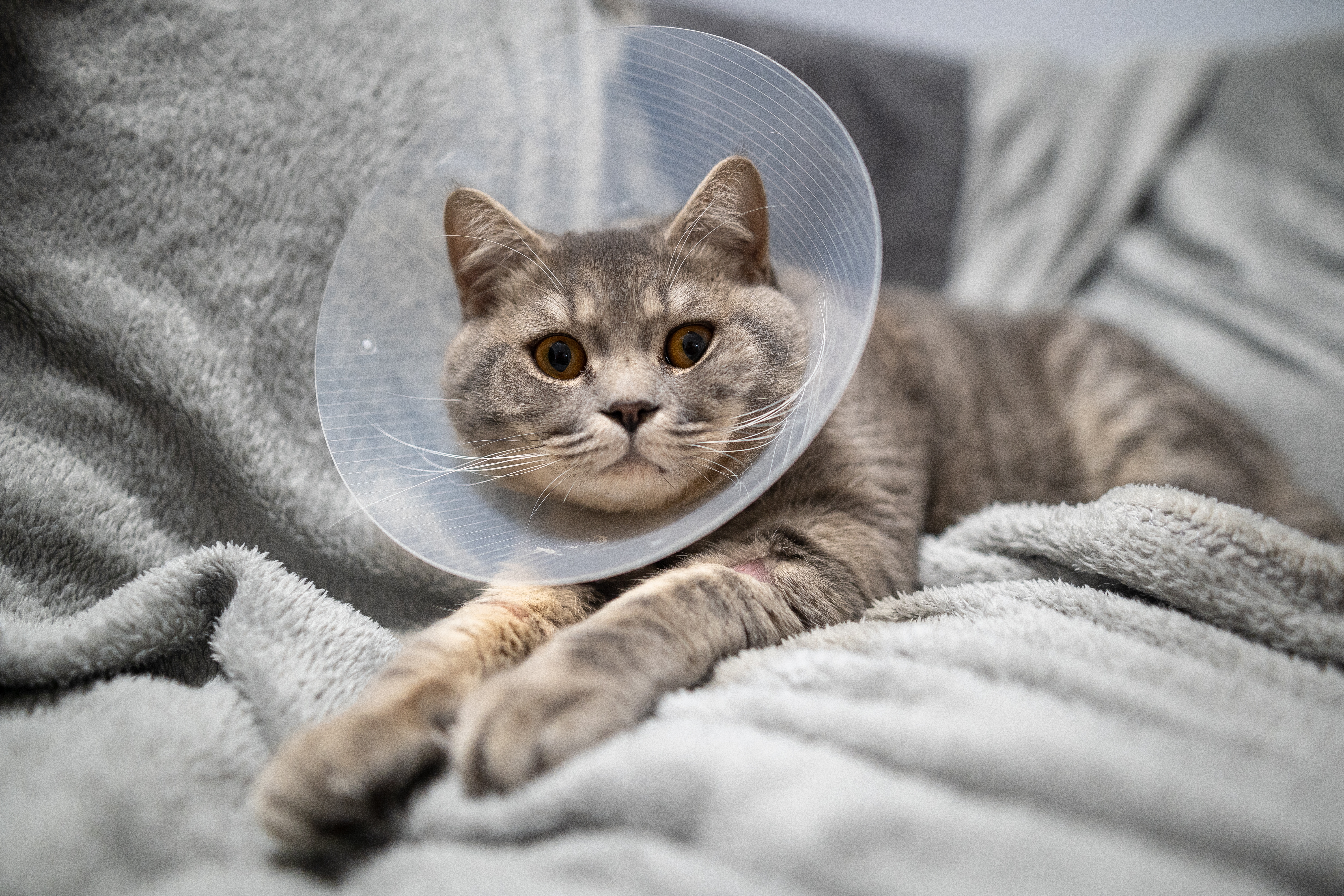
Are you worried about your pet’s health and unwanted behaviors? Spaying and neutering offer a proven way to safeguard their well-being. This article will guide you through the myriad benefits, from preventing serious health issues like uterine infections and breast tumors to curbing accidental litters and roaming tendencies.
Discover how sterilization is a key aspect of responsible pet ownership. Keep reading for insights on protecting your furry friend.
The Benefits of Spaying and Neutering
Spaying and neutering provide medical, behavioral, and public health benefits for your pet. These procedures can prevent reproductive health issues, reduce unwanted behaviors, and contribute to controlling the pet population.
Medical benefits
Neutering your pet has proven to reduce the risk of certain cancers. Male pets face a lower chance of testicular cancer, while females are less likely to suffer from breast tumors, which are malignant in about 50% of dogs and 90% of cats.
This preventive veterinary care extends your beloved companion’s lifespan by minimizing these life-threatening health issues.
Spaying female pets before their first heat offers protection against serious health problems, including uterine infections known as pyometra and reproductive health complications.
By choosing this preventive measure, pet owners safeguard their animals against potential emergency medical situations that not only pose a significant risk to the pet’s health but also lead to high veterinary care costs.
Behavioral benefits
Spaying and neutering your pet can bring about considerable behavioral benefits. These procedures can help reduce roaming and aggression, making your pet less likely to get into fights or run away from home.
Additionally, spaying and neutering can decrease the likelihood of certain unwanted behaviors associated with mating instincts, such as marking territory and loud vocalizations.
Moreover, these surgeries have been linked to a decreased risk of certain behavioral issues in pets. For example, intact male cats are more prone to spraying urine inside the house as a way of marking their territory.
Spaying and neutering have shown effective in reducing this behavior significantly. Similarly, it’s well-documented that unspayed female dogs may exhibit anxious behavior when in heat – spaying them eliminates this discomfort while also preventing undesirable litters.
By considering these points, it becomes clear that addressing behavioral benefits is very crucial for all pet owners.
Public health benefits
Spaying and neutering not only contribute to your pet’s health but also play a crucial role in promoting public health. By reducing the number of homeless pets, these procedures help control the population and minimize the spread of diseases.
Preventive medicine is vital in preventing unwanted litters, which can lead to overpopulation issues. This directly impacts animal welfare and reduces the burden on shelters and rescue organizations striving to care for these animals.
Also, spayed or neutered pets are less likely to exhibit roaming behaviors, lowering the chances of aggressive encounters with other animals or humans.
In addition, preventive care through spaying and neutering plays a significant role in cancer prevention among pets. According to recent studies by veterinary experts, intact (unspayed or unneutered) pets have a higher risk of developing certain types of cancers compared to those that have been sterilized at an early age.
These benefits align with broader public health initiatives aimed at controlling animal populations while enhancing overall community well-being.
Moving forward – When to Spay or Neuter Your Pet
When to Spay or Neuter Your Pet
Spaying or neutering your pet should be considered based on their age and weight. The recovery period and potential discomfort during the procedure are important factors to keep in mind.
Age and weight considerations
When considering spaying or neutering your pet, it’s important to factor in their age and weight. Most veterinarians recommend spaying or neutering dogs and cats around six months of age or before their first heat cycle to prevent health issues later on.
Weight also plays a role as overweight pets may have a higher risk of complications during surgery. It’s advisable to consult with your veterinarian to determine the best timing for your pet based on their individual needs.
Spaying or neutering at an appropriate age and weight can contribute to preventing reproductive health issues, reducing roaming behaviors, and controlling the homeless pet population – all crucial factors in maintaining the overall well-being of your furry friend and supporting efforts to address pet overpopulation.
Recovery period
After spaying or neutering your pet, the recovery period is crucial. Your furry friend will need to rest for a few days and avoid strenuous activity to ensure proper healing. It’s important to follow your veterinarian’s post-operative care instructions carefully, including any prescribed medications and check-ups.
Providing a comfortable and quiet space for your pet to recover is essential.
Ensuring that your pet has access to food, water, and a clean litter box or outdoor area (in the case of dogs) will aid in their recovery process. Be observant of any unusual behavior or signs of discomfort that may indicate complications.
By providing attentive care during this crucial time, you can help ensure a smooth and successful recovery for your beloved pet.
Moving on from the recovery period, understanding the importance of preventive care for your spayed or neutered pet is vital in maintaining their long-term health and well-being.
Potential pain during the procedure
Your pet may experience some discomfort after spaying or neutering. However, pain management medication is typically provided to ensure your pet’s comfort during the recovery process.
It’s important to follow the veterinarian’s post-operative care instructions carefully and keep an eye on your pet for any signs of prolonged pain or unusual behavior. Ensuring a comfortable and stress-free environment during the recovery period can also help alleviate any potential discomfort your pet may experience.
It’s crucial to understand that while there may be some discomfort, the long-term benefits of spaying and neutering far outweigh this temporary issue. Additionally, proper pain management and attentive care can significantly minimize any potential discomfort for your beloved pet.
The Importance of Preventive Care
Ensuring proper preventive care for your pet’s reproductive health and well-being is crucial. To learn more, read on for valuable insights into how spaying and neutering can protect your beloved pet.
Sterilization for pet health
Sterilization, such as spaying and neutering, plays a crucial role in maintaining your pet’s well-being. This veterinary surgery not only prevents unwanted litters but also reduces the risk of certain cancers and infections.
By spaying or neutering your pet, you can significantly lower the chances of reproductive health issues, promoting their overall physical health.
Furthermore, sterilization contributes to population control by addressing pet overpopulation concerns. Preventing unplanned pregnancies through spaying and neutering programs helps manage the number of homeless animals while minimizing the strain on animal shelters and rescue organizations.
As a responsible pet owner, ensuring that your furry companion undergoes this procedure leads to positive long-term effects on their health and contributes to controlling the pet population.
Prevention of reproductive health issues
Spaying and neutering your pet is an essential step in preventing reproductive health issues. These procedures can significantly reduce the risk of certain cancers and infections, promoting a longer, healthier life for your furry friend.
By spaying or neutering your pet, you also contribute to reducing the number of homeless animals and effectively manage the pet population crisis. This approach not only benefits individual pets but also promotes overall public health by minimizing the spread of diseases related to mating behaviors.
Moreover, spaying and neutering can prevent behavioral problems associated with mating instincts, such as roaming and aggression. Addressing these issues through sterilization helps create a safer environment for both pets and their human companions while minimizing potential conflicts with other animals in the community.
Spreading Awareness
Spread awareness about the importance of spaying and neutering in controlling the pet population and preventing overpopulation-related issues. To learn more, read on.
Addressing pet overpopulation
Addressing pet overpopulation is crucial to reducing the number of homeless pets. Spaying and neutering can help prevent unwanted litters, which in turn eases the burden on animal shelters and rescues.
By supporting spay/neuter programs and spreading awareness about responsible pet ownership, we can all play a part in controlling the pet population and ensuring that every pet has a loving home.
Spreading awareness about the impact of successful spay/neuter programs is essential. According to statistics, one unspayed female dog and her offspring can produce 67,000 dogs in just six years.
Additionally, an unspayed female cat and her offspring can multiply into 420,000 cats in seven years. These numbers highlight the urgency for addressing pet overpopulation through preventive measures such as spaying and neutering.
The impact of successful spay/neuter programs
Addressing pet overpopulation plays a crucial role in the success of spay/neuter programs. These initiatives significantly reduce the number of homeless animals and positively impact public health by lowering the risk of diseases and injuries associated with stray animals.
Spay/neuter programs have contributed to a substantial decrease in euthanasia rates, helping control the pet population and promoting responsible pet ownership. By supporting these programs, you are actively contributing to the well-being of pets and communities while also helping to curb the strain on animal shelters and resources.
Through successful spay/neuter efforts, thousands of pets are spared from living without homes or facing potential harm due to overpopulation. The impact is clear – healthier, happier pets and a safer environment for both animals and humans.
Ways to support spaying and neutering efforts
The impact of successful spay/neuter programs underscores the significance of supporting ongoing efforts to control pet populations. One crucial way to contribute is by volunteering at local animal shelters or spay/neuter clinics, assisting with administrative tasks, or helping raise public awareness about the benefits of these programs.
Additionally, donating to organizations dedicated to spaying and neutering initiatives provides vital financial support for their continued success in addressing pet overpopulation and promoting pet health.
By participating in fundraising events or spreading the word on social media platforms, individuals can play a pivotal role in sustaining these essential efforts.
These activities not only contribute to the betterment of animal welfare but also align with key principles such as pet health, population control, and public education. Taking an active role in these endeavors empowers individuals within their communities and contributes significantly towards creating a positive impact on the well-being of pets overall.
Conclusion
Spaying and neutering offer a range of benefits for your pet, including improved medical health, reduced aggression, and better public health outcomes. Remember to consider age and weight when scheduling the procedure, as well as the recovery period afterwards.
By spreading awareness about spaying and neutering, we can help control pet overpopulation and support successful programs in our communities.


